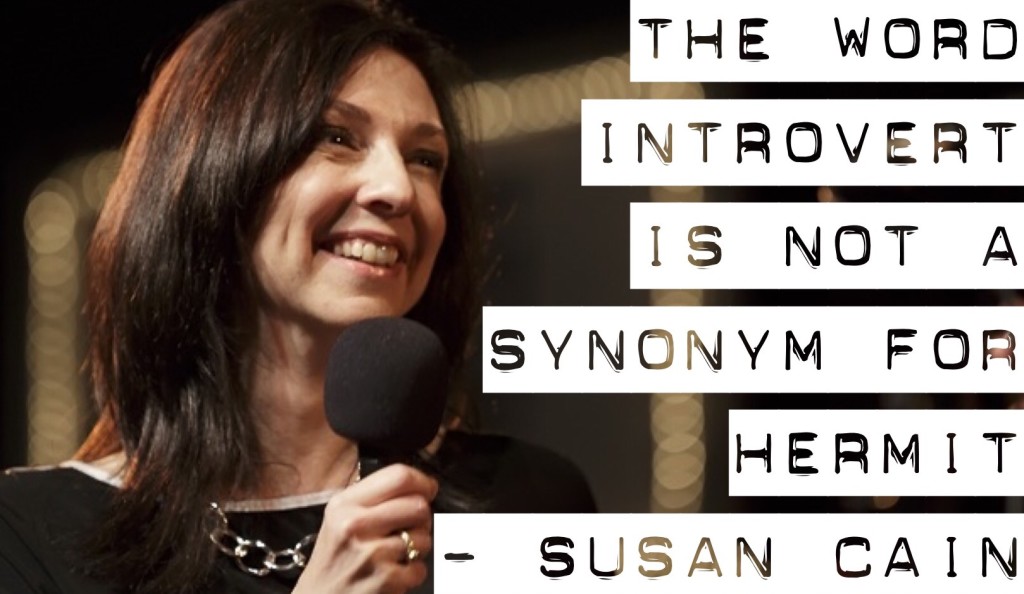A few months ago, I wrote a post on 4 Ways to “Flip the Classroom” in Your Church. You can read the article here, but since then, I’ve been in countless conversations regarding this and the future of training for church leaders and church planters. I’ve had the privilege of presenting this both at conferences as well as in individual conversations. As a result, here’s a video version of the idea.
Articles
How To Choose A Children’s Bible

Being a father of three children and a pastor, I take my children’s spiritual life seriously. After all, Proverbs 22:6 says, “Train up a child in the way he should go; even when he is old he will not depart from it.” As important as it is to be a part of a church that has a good children’s program, I cannot fully rely on the church to cultivate my children’s spiritual life. It’s first and foremost my responsibility.
In fact, when you look at Joshua 1:8 and Deut 6:4-9, you discover the critical connection between Bible reading and a child’s spiritual life.
Joshua 1:8 – This book of instruction must not depart from your mouth; you are to recite it day and night so that you may carefully observe everything written in it. For then you will prosper and succeed in whatever you do
Deut 6:4-9 – Listen, Israel: The Lord our God, the Lord is One. Love the Lord your God with all your heart, with all your soul, and with all your strength. These words that I am giving you today are to be in your heart. Repeat them to your children. Talk about them when you sit in your house and when you walk along the road, when you lie down and when you get up. Bind them as a sign on your hand and let them be a symbol on your forehead. Write them on the doorposts of your house and on your gates.
So my hope, through this post, is to help you navigate through the plethora of children’s Bibles out there. Now obviously, this isn’t all there is, but I do believe that this is a good sampling.
When you look at the image above, I’ve plotted the Bibles according to their difficulty/maturity level and the level of engagement that my children displayed when I read it to them. As a father and a pastor, a good children’s Bible does not only have to be theologically accurate, but it also must convey the Scriptures in an engaging manner at the right maturity level.
So here are my reviews:
10 Reasons Systems Matter for Church Planting

There are no perfect models, and there is no silver bullet. Many models are useful though.
What’s fascinating is that two church planters can use the exact same model in the same city and get vastly varying results. Notice that I said the same model, but I didn’t mention anything about the systems that each church planter used.
For example, let’s consider the Dodge Charger that police drive versus the Dodge Charger that you can drive off the lot.
Although, at first glance, they both look like the same car, the performance between the two is like night and day. For police cars, not only do they upgrade the engine, but they also change out the battery, alternator, cooler, suspension, brakes, and many other components that make up the car.
Essentially, the model or framework of the car is the same, but everything that makes up the car, which are its systems, are different.
I realize this isn’t a perfect example, but it illustrates the importance of systems, as the next step, in church planting.
This is a natural next step for those of you who are highly detailed and systematic. However, what I’ve found is that many church planters are weak in this area.
As a result, church planters will often think about their church planting model at a 30,000 foot level and work on many of the aspects needed to plant successfully, instead of working in those aspects.
If all the work is done on the plant, instead of in the plant, then planters will not have any control over the systems that are shaping it; and that will ultimately determine the fate of their church plant.
For example, working on the plant is all about thinking through the location, name, logo, and vision statement. Working in the plant is about thinking through financial sustainability, church structure, launch team, and the intricacies of congregational formation, and long-term discipleship.
I’m not advocating that you take care of every single detail yourself, but I am advocating that you involve yourself at every step of the process. If God has called you to plant a church, he has called you to be the steward of this vision. Don’t neglect your responsibilities and don’t delegate the details.
What would happen if you were stubborn and decided to leave systems to chance?
[Read more…] about 10 Reasons Systems Matter for Church Planting
New Churches: Multiply the Mission
Currently, a significant trend in the U.S., Canada, and around the world is a renewed emphasis on starting new churches. More than 4,000 new churches are launched in the U.S. each year alone, each one representing the potential to reach new people with the gospel of Jesus Christ.
However, new churches commonly struggle with limited resources, a lack of trained volunteers and few tools to support their work. Even more, these limitations can often be the most detrimental to churches in their very first years.
But LifeWay and the initiative that I’m leading through New Churches is committed to help.
For churches in their first two years of operation, LifeWay has a variety of free offerings to help get a few of the foundational aspects of ministry in place. This includes helps for:
- Bible Study Groups (6 months of digital curriculum for all age groups)
- Church Website: twenty:28 (Free website design and 1 year of hosting)
- Leadership Development (1 year access to Ministry Grid, LifeWay’s new web-based training platform)
- LifeWay eGiving $0 month + 2.75% + .30 per transaction. Plus, no set-up fee for text giving
- LifeWay Envelope Service– 600 free offering envelopes
- Plus, $500 in free printed LifeWay resources of the church’s choosing
To qualify to receive the free offers above, simply complete the form here at New Churches.
Book Review: Saturate by Jeff Vanderstelt
 *My post here was originally published on June 15, 2015 in Christianity Today.
*My post here was originally published on June 15, 2015 in Christianity Today.
When I first stepped into my role as a small-group pastor, I was at a loss as to how to help my church get on mission. I knew what it meant to be missional and intentional with my relationships. I knew how to share my faith. I even knew how to motivate my leaders to get on mission with God. However, the one thing that I didn’t know was how to make mission normal in our church—I didn’t know how to help the congregation get on mission with God in everyday life.
As a result, much like Jeff Vanderstelt explains in Saturate: Being Disciples of Jesus in the Everyday Stuff of Life, I loaded my leaders and groups with a task list of missional activities. There was only one problem: I was teaching and expecting my congregation to be Jesus—when only Jesus can truly be Jesus. As a result, I was expecting my group leaders to do more than Jesus every asked of them. In reality, as Vanderstelt puts it, “we are not meant to carry the weight of the world or the mission of Jesus on our shoulders. Jesus came to seek and save. He doesn’t expect us to become the saviors.”
So when I first encountered Vanderstelt’s ministry, Soma, I was impressed with the way they were able to normalize mission and make it easy for their church members to get on mission with God in everyday life. That’s what led me on my journey to digest everything I could get my hands on from Vanderstelt and Soma—articles, seminars, audio files, and the like. But now you can simply read Saturate, a book with all of their wisdom in one place.
As I was preparing to develop a discipleship pathway for my multi-site church, I was inspired by the ministry philosophy, identities, and rhythms of Soma because they have the clearest missional paradigm of discipleship. Soma’s focus, and subsequently, the focus of Saturate, is to provide a vision for complete and utter Jesus saturation rooted in who you are in Christ, rather than in what you do.
[Read more…] about Book Review: Saturate by Jeff Vanderstelt
3 Ways Introverts Can Become Level 5 Leaders

In an earlier post, I shared one of my most vulnerable, if not, the single greatest self-revealing moment of my life – it had to do with cream puffs, moms, and a caffeine addiction.
Without divulging that story again (since you can read it here), I wanted to revisit, in this post, why I acted the way that I did…
It’s because I was an introvert.
I remember studying all about this in my Psychology of Religion class – to be honest, it brings back both fond and confusing memories of reading Freud and Jung. But it wasn’t until I read Susan Cain’s Quiet, that I began to truly appreciate the spectrum of introversion-extroversion and why it mattered.
Cain explains the importance of this scale…
Our lives are shaped as profoundly by personality as by gender or race. And the single most important aspect of personality—the “north and south of temperament,” as one scientist puts it—is where we fall on the introvert-extrovert spectrum. Our place on this continuum influences our choice of friends and mates, and how we make conversation, resolve differences, and show love. It affects the careers we choose and whether or not we succeed at them. It governs how likely we are to exercise, commit adultery, function well without sleep, learn from our mistakes, place big bets in the stock market, delay gratification, be a good leader, and ask “what if.” It’s reflected in our brain pathways, neurotransmitters, and remote corners of our nervous systems. Today introversion and extroversion are two of the most exhaustively researched subjects in personality psychology, arousing the curiosity of hundreds of scientists. (Location 220)
So what are the differences between introverts and extroverts?
At a very general level, Cain describes the difference well…
Introverts…
- Are drawn to the inner world of thought and feeling
- Focus on the meaning they make of the events swirling around them
- Recharge their batteries by being alone
Extroverts…
- Are drawn to the external life of people and activities
- Plunge into the events themselves
- Need to recharge their batteries when they don’t socialize enough
“To be great is to be bold.”
This is a huge myth in our society and it’s called the Extrovert Ideal in Susan Cain’s Quiet, “The omnipresent belief that the ideal self is gregarious, alpha, and comfortable in the spotlight.”
We see the way that this myth has been perpetrated in our society…
- By the way that the home coming king and queen are the most popular and gregarious ones
- By the way that political elections seem to be won on charisma
- By the way that the main characters in our TV shows and movies seem to be comfortable in the spotlight – anyone remember Zack from Saved by the Bell? Jerry from Seinfeld? Or how about Phil from Modern Family?
Now I’m not saying that Jerry, Phil, or Zack are the ideal representatives of greatness (not that there’s anything wrong with them), but the fact is, you don’t need to be an extrovert to be a great leader! Jim Collins reputed this notion with his Level 5 Leader research in Good to Great.
According to Collins, Level 5 leaders are individuals in whom genuine personal humility blends with intense professional will. In other words, Collins discovered that bold, loud and gregarious personalities were not indicative characteristics for successful leadership.
After all, according to Cain, “some of our greatest ideas, art, and inventions—from the theory of evolution to van Gogh’s sunflowers to the personal computer—came from quiet and cerebral people who knew how to tune in to their inner worlds and the treasures to be found there.”
So, as an introvert, here are three things that I’ve been incredibly intentional with, in my pursuit to become a Level 5 leader:
[Read more…] about 3 Ways Introverts Can Become Level 5 Leaders
Church Planting, Thermometers, and Thermostats
*My post here was originally published on May 7, 2015 in Christianity Today.

Isn’t it easier to point out the wrongdoings of others and tell people what to do, rather than be a part of the solution?
My wife and I have noticed this in our children—they love playing the victim. So whenever there’s conflict, instead of figuring it out themselves, they come to us crying out “injustice!”
I wonder where they learned that from? I knew I never should’ve let them watch Sesame Street…
In order to fix this attitude, a few days ago, my wife began teaching them the difference between being bossy and being a leader. Here’s the difference:
- Bossy people point out the wrongdoings of others, expect others to fix their issues, and are never wrong.
- Leaders take responsibility for situations, don’t dwell on problems, focus on solutions, and make change happen.
As I was reflecting on this new paradigm of parenting (my wife is amazing by the way), I couldn’t help but notice the similarities that it had with thermometers and thermostats. Let me explain:
- Thermometers point out what currently is, expect others to do something with that information, and they provide us with the standard—they are never wrong. Thermometers are indicators.
- Thermostats, on the other hand, take the information from the thermometer and do something about it. Thermometers take responsibility for the environment and focus on solutions. Thermostats are change agents.
Can you see the similarities that bossy people have with thermometers and leaders have with thermostats?
So what are you? Are you more of a thermometer or a thermostat? This is an important question as it affects the posture that you will subconsciously take in planting and leading a church.
[Read more…] about Church Planting, Thermometers, and Thermostats
Two Ways to Overcome Your Weaknesses

There was a time in my life where I dreaded the thought of meeting new people. It’s not that I was a germaphobe or had anthropophobia (the fear of people), it was just that I preferred to spend time with people I knew, rather than do the small talk mingling thing.
This first came to light when I started pastoring. I remember, it was a weekday morning and I needed coffee (and no, I don’t have an addiction). I was at the office and could’ve easily walked a few steps into the kitchen and made my own pot, but I soon realized that it was the day that all the mom’s met in the basement of the church for fellowship. That only meant one thing: free coffee + cream puffs + ton of desserts.
Knowing that there would be a lot of mom’s and young children, I plotted my strategy as I made my way to the basement:
- Rule #1: Keep moving
- Rule #2: Smile and say hi, but focus on walking into the kitchen
- Rule #3: Never stop moving
When I opened the basement doors, there were over 50+ women and young children mingling, in what looked like, absolute chaos (at the time I was newly married without kids). In a cold sweat, I immediately made my way towards the kitchen remembering to never stop moving. As I turned the corner to walk into the kitchen, I soon discovered that there were another 40+ women and children hiding around the bend. So staying true to my rules, I never stopped moving. I just shifted directions and went straight back upstairs into the office kitchen, where I forewent the cream puffs, and made my own coffee.
As I was making my own coffee, I couldn’t help but ask myself, “What’s wrong with me? Why did I act that way? Why was I in such a nervous cold sweat when I saw all those moms and kids?” As a new pastor, I knew this was a glaring weakness. I knew how important it was to be able to meet new people, remember their names, and minister to them.
Was it that I didn’t like moms and children? Well, considering the fact that I didn’t have children at that time, perhaps I just didn’t know what to do with them, and let’s face it, mothers can be intimidating at times. But I didn’t think that was quite it. So what was it?
As I continued to reflect on my behavior and this apparent weakness of mine, I began reflecting on other situations that mimicked this one – situations where I was in a sea of new and unfamiliar faces. The only other parallel that came to mind was when I was attending a conference, teaching a class, or preaching a sermon. Oddly enough, in each of those situations, I was a completely different person – I loved meeting new people and I would even remember their names, most of the time!
So what was wrong with me? Why was I acting like Jekyll and Hyde?
Through the journey of discovering my strengths (click here for a post where I explain this), the one thing that I knew about myself was that I was a Developer. I loved helping people grow and I loved helping things develop. In other words, I loved everything about development. So when I compared both situations in light of my strengths, a lightbulb came on! In conferences and when I’m teaching or preaching, my posture is towards development – so I don’t mind meeting new people – in fact, I welcome and pursue it! However, to that group of moms and kids, my purpose was not to develop any of them – it was merely to get coffee and cream puffs.
So if I wanted to overcome my glaring weakness of meeting new people, all I had to do was shift my perspective and reframe the situation. Instead of viewing others as strangers, I needed to view them through my developer lens. So that means every stranger is an individual that I can either develop, or an individual who can develop me.
Breaking Through the Glass Ceiling for Pastors

What do you do when your church is growing and your responsibilities are increasing?
There are only two options: You either hire another staff member, or get better at distributing your work. If you don’t do either, then there will be a glass ceiling that will forever haunt you. I answered the former solution in an earlier post, so today we’ll look at the importance of distributing your work.
I love this quote by Sun Tzu from The Art of War:
“If you know the enemy and know yourself, you need not fear the result of a hundred battles. If you know yourself but not the enemy, for every victory gained you will also suffer a defeat. If you know neither the enemy nor yourself, you will succumb in every battle.”
To paraphrase, if you know your enemy, you’ll win 50% of the time, but if you know yourself, you’ll win the other half.
How often do we spend all our time reading the latest strategies and methods for leadership and ministry, while neglecting the important task of learning what kind of leader God has made us to be? This reminds me of that old Hebraic tale of Rabbi Zusya and Moses: When he was an old man, Zusya said, “In the coming world, they will not ask me: ‘Why were you not Moses?’ They will ask me: ‘Why were you not Zusya?’”
The reason we would rather live someone else’s story, than discover our own, is because introspection is hard work.
However, unless you discover how God has uniquely wired you, then you’ll never know your unique kingdom contribution, and that glass ceiling will follow you everywhere.
So let’s get back to that original question, what do you do when your church is growing and your responsibilities are increasing?
Well, first of all, you better not take it all on yourself! That only leads to burnout. So you need to get better at delegation.
There’s a fork in the road at this point. There are some who believe that you need to surround yourself with a team and let them choose what they want to do, while you get the scraps. While this may sound servant-like and altruistic, it’s actually foolish. Play this out for a bit. If you keep on giving away the things that you do best and the things that give you life, where do you think you’ll end up? That’s right. Burnout. Again.
Instead, you actually need to ask yourself two questions: What are the leadership responsibilities unique to my role? And how do my strengths line up with those tasks? Answering both questions will take a lot of time, but the first question is pretty straightforward since you just need to write out all of your responsibilities and tasks, and then systematically cross out the ones that others can do. You will then be left with a list of responsibilities and tasks that you and only you can uniquely do. Answering the second question is much harder work though, since it requires introspection. However, once you discover your strengths and how they line up with your responsibilities and tasks, you will have essentially carved out a role for yourself that plays to your strengths, while managing your weaknesses. The beauty of this rationale is that your weaknesses are actually going to be someone else’s strengths.
So how do you discover your strengths? How do you discover the way that God has uniquely wired you? How do you determine the unique kingdom contribution that you have been designed to make?
First of all, take a moment and do some introspection by answering these questions:
[Read more…] about Breaking Through the Glass Ceiling for Pastors
Crowdfunding, Kickstarter, and The Future of Training Church Planters
*My post here was originally published on April 9, 2015 in Christianity Today.
What if there was a more effective way to train church planters? A way that focused on developing competencies and skills rather than the memorization of steps?
Every church planting program falls somewhere along this spectrum between a heavy emphasis on the classroom or field experience. Both are necessary, but there are weaknesses with an either/or approach. On the one hand, an over-emphasis on the classroom assesses one on their knowledge, rather than their ability to actually put their knowledge to action. On the other hand, an over-emphasis on field experience tends to be isolated to one particular method of doing ministry in a contextualized context, which may or may not guarantee success when the context of ministry changes.
As much as most church planting programs recognize the necessity for a both/and approach, most are just simply requiring both classroom and field experience time, rather than discovering a way to integrate them together.
Enter: Crowdfunding.
By now, crowdfunding, Kickstarter and Indiegogo are household names. Since 2009, over 8.3 million people have pledged $1.6 billion to 82,000 projects on Kickstarter. Also, over 15 million people from 224 countries visit Indiegogo a month. The most well known crowdfunded initiatives are arguably the Pebble smart watch, Oculus Rift and Hoverboards (yes, I did say hoverboards). Each of these initiatives started as an idea, and as a result of crowdfunding, they turned into reality. Crowdfunding touched a soft spot in my heart when LeVar Burton brought Reading Rainbow back to the world when over 100,000 people pledged $5+ million to it.
What if this was a part of their core curriculum? After all, where else would a potential planter have the real life opportunity to innovate, collaborate, cast vision, create momentum, and raise funds before they planted a church and had to actually innovate, collaborate, cast vision, create momentum, and raise funds for their church? Crowdfunding would be the perfect way to mix classroom and field experience time for a church planter. Essentially, by requiring the church planter to crowdfund an idea, you would be cross-training them in many of the same areas required to plant and lead a church. (Obviously there’s more to planting and leading a church than the skills required in crowdfunding, but there are many overlapping areas.)
Imagine if crowdfunding was part of the training ground and litmus test to see if an individual had the core competencies to plant and lead a church?
Not only would you be able to identify actual strength and growth areas in the planter, by which you could create a plan of development around, but with successful crowdfunded initiatives, you would also be creating an additional revenue stream that could be used to further fuel and fund church planting efforts.
When researching successful crowdfunded initiatives, I discovered five common traits: [Read more…] about Crowdfunding, Kickstarter, and The Future of Training Church Planters

